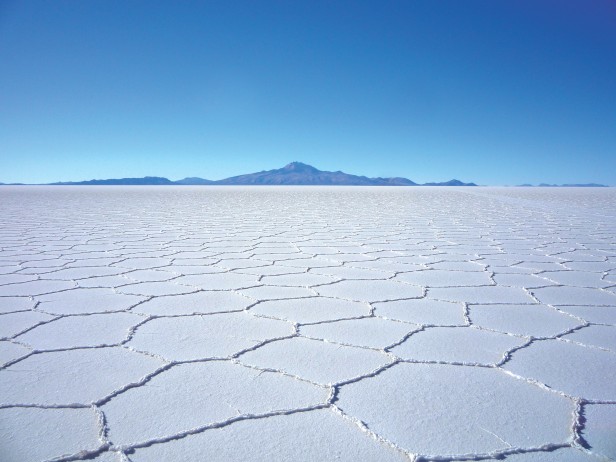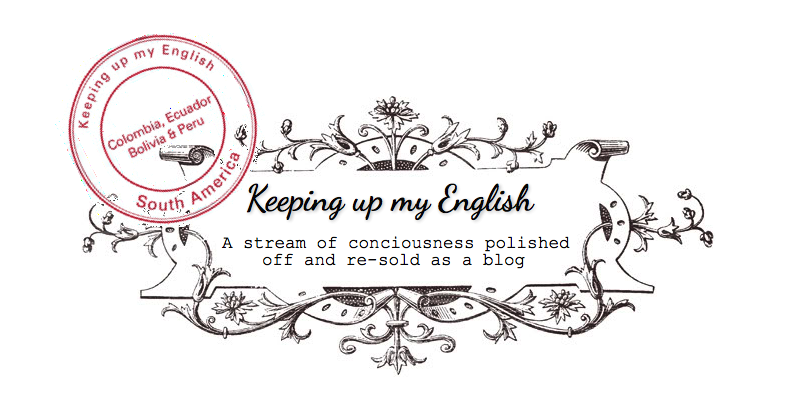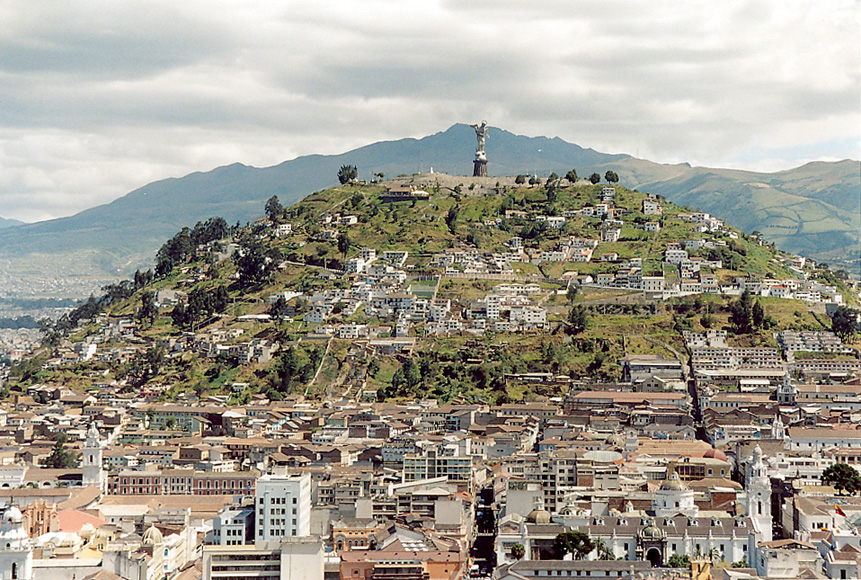Hostel Charcas, Sucre > Hostel los salores, Tupiza > various nameless, cold hostels in south Bolivia!!
Bolivia was certainly the least pedestrian of the four countries we have visited in S. America! In brief, La Paz beat us up pretty badly the first time round. Due to the altitude (headaches, breathing issues, stomach issues...) and an impromptu stomach bug (when are they not!?), we managed one night out but otherwise spent time slowly exploring the highly contoured streets and brightly coloured shops. When the free walking tour, as interesting as it was to hear about the folklore and under-the-radar crime in Bolivia, ended early because Lizzie and I both chose the same moment to nearly faint, I must admit I was looking forward to getting to a quieter hostel at a lower altitude. I will return to La Paz, as we did, twice, in future blogs for a more comprehensive summary.
| Sucre´s mirador |
Said idyllic location was 12 hours south of La Paz, in Sucre, a medium sized, very pretty, touristic city that we had been advised to visit by many fellow travellers. Unfortunately, our hostel, Charcas, was one of Lonely Planet´s few fails with every adjective being contradicted almost in full (´clean´, ´hot water´, ´traveller´s favourite´...). Saying this, for 3 pounds a night for our own private room, we were happy enough. The previosuly mentioned stomach bug sadly left me in bed for a good chunk of our time in Sucre, but for Lizzie and Bean, the mirador cafe, offering wonderful views of the city, warm weather and friendly people, filled time perfectly. We spent three days here, mostly up in the mirador cafe (!) and set off for Tupiza, where we aimed to start our tour of South Bolivia and the salt flats.
| Red rocks in tupiza |
Tupiza was beautiful. Setting the backdrop for the dramatic end of the legendary ´Butch Cassidy and the Sundance Kids´, walls of sharp, red rocks jut out in all directions, creating scenery that I have never seen before. Having only one day to spend here before we embarked on our salt flats tour, we chose to do a day of horse riding, in tribute to Butch Cassidy. Having not ridden for over ten years, I was slightly nervous, and perhaps more so once I actually saw the horses that we were supposed to ride! Lizzie´s rather pock-marked horse was the happy(ish) mother to a fairly new born foal, who was allowed to come on the tour with us. Luckily Lizzie is a dab-hand at horse rising, and so was unphased by the littleun trying to feed everytime we made a view-stop. My horse, supposedly the easiest horse to ride, did not particularly like our impromptu guest and flinched or set off trotting everytime he came close. Despite this, I managed to enjoy the fantastic scenery, the red rocks contrasting the beautifully blue sky, and only wobbled a couple of times! Half way through our journey, we stopped to climb a dramatic red canyon and got cornered here by a traditionally dressed Tupizan shepardess (or goatardess?) with her herd of 100+ goats. It was rather surreal, but certainly added to what was a memorable day. We slept well in our luxurious hostel (private room, warm showers and comfortable clean beds) and got up at the crack of dawn to start our four day journey to the Salt Flats in Uyuni.
...And what a journey it was. After a long first day in the car, we were caught in a rather dramatic storm on day two... An extract from the email I sent to Mum once we thankfully got back (alive!), apologies for the unfruitful language:
´Bit
of drama on the flats...The company we went with were well reputed, 18 years of
tours they said, but the issues with the cars started on day 1 when one
group of girls in our tour group had to stay in a barn because their car conked out. We
were secretly a little smug that ours
was ok, but it was also very cold and i must admit i got a bit grumpy when i
couldnt feel either of my feet on the first night (minus 10 maybe).
The
drama really started on day 2 just after a lovely spell in some 40 degree
natural thermal baths. We set off into a fairly windy,
snowy looking plane with 7 other cars. A snowdrift quickly set in and
we quickly couldn´t see the other cars infront or behind us, and the
drivers kept having to get out (gloveless) into the freezing cold to consult. We
seemed lost but assumed it was ok and that this happened often. 4 of the cars quickly
got separated from us and our group of 4 went looking for them, very difficult when visibility is about 1m,
getting us further lost. We finally found their tracks and started
following, still not able to see much for wind & snow, a real storm
by now, and our car chose this moment to break down.
For half an hour we sat with the doors open and four other
drivers all freezing themselves trying to fix it. Lizzie and i were sent over to one of the
other jeeps because we were freezing cold and luckily managed to warm up.
Bean, unbeknown to us, was in our broken jeep
for another hour while they tried to fix it. She came over to ours when
they gave up after another hour, remarkably cheery. And so with 7 of us
squished into 5 seats we set off (backpacks and sleeping bags still on
the roof of our broken car) to find the hostel. The problem
now that it was getting dark....
30 minutes later, the 3 cars were totally
lost in the dark (still stormy), going over ridiculous terrain. Not
gonna lie, I was pretty scared that this car would break down too as we
would have had to sleep in it and we were
all already freezing. I was super thankful to the others for being so wonderfully calm!
So after 2 hours of this lost stormy driving, we spotted a
light on the horizon, and headed towards it for 40 minutes of optimistic but very bumpy driving. On arrival, it turned out to be the equivalent of a desert mirage, and found that it was not a warm comfy hostel, but instead a reflector of a ´don´t go this way´ sign!! However, this did seem to put the drivers
back on track and we soon found a hostel (not ours, but any hostel would have done at this point!). We got in at 9 oclock, remarkably only 3 hours late, but just happy to have
found somewhere and not broken down. We quickly discovered that our driver, Dennis, had STAYED in the
broken car with the cook to try and fix it, we were terrified
that they would have to sleep out in the -25 degree weather. After some food, we got a horde of
blankets (sleeping bags and backpacks could have been useful at this
point, but they were busy being in the storm!) and had a restless nights sleep. Thankfully, when we woke, we discovered that the driver and cook had arrived with our bags late
the night before, the car had somehow been fixed. They were
remarkably cheery....´
 |
| Flamingoes |
What an adventure! The worst storm for 5 years apparently. This drama aside, we saw some irreplacable views and day three in particular (the day after the storm) was stunning, with the sky having purged itself the night before, choosing now to shine a dazzling blue over a number of lagoons, a volcano and mountains. One particular highlight was the flamingo lagoon, where 100s of flamingos white, pink and black clawed their way through the shallow waters creating an unforgettable scene! This night we stayed in a hotel made of salt (yes yes, my heaven) at a reasonable and much warmer 3,500m. The cold and drama of the night before made this even more luxurious and we enjoyed a good meal with a couple of beers recounting our story to the other oblivious travellers.
 |
| the incredible salt flats |
A 5:30am start the next day was the last of our early mornings, and we set off to catch the sunrise over the salt flats. Without a doubt, ending in Uyuni with the individual experience of the flats, was an excellent choice. It is a little difficult to explain the optical illusion effect that the landscape creates. Stretching for over 1,200kmsquared, the vast expanse of ´flat´is unimaginable. At one point, I thought I had seen where we were to watch the sunrise; a small island perhaps 100m tall in the middle of the flats maybe a couple of kilometres ahead. After half an hour of driving towards it, the small mound had developed into a 6000m mountain, a good 100km away. Sunrise was incredible, with the orange orb peaking its head over the dead flat horizon and rising slowly into day. We visited an odd island in the centre of the salt flats for further views (and cactusses?!), took the typical ´photos locos´ where you can create optical illusions, making yourself look disproportinally big or small, and arrived back in the small ugly town of Uyuni at midday. We found a couple of restaurants and sat chatting with some friends we had made until the evening, when we took another fateful nightbus (punctured tire) back up to La Paz for round 2.
NB: Photos are not my own, mine are slightly better ;) but I will have to upload photos another day as computers have become a little basic once again! Ciaooo xx




































